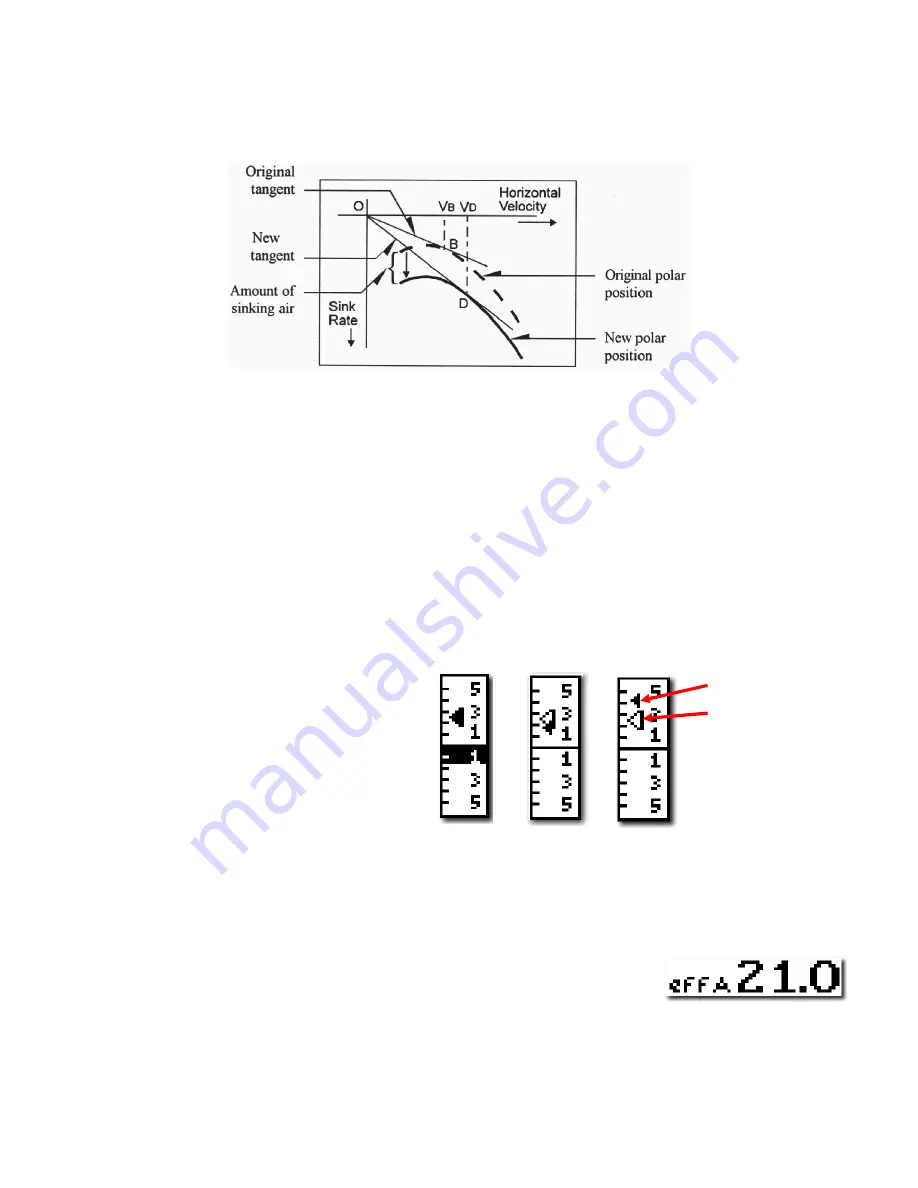
Page 33
The speed to fly value is the optimum flying speed to obtain the best glide ratio. This
value depends on performance of your glider as well as vertical and horizontal airflow. In
calm air, the optimum flying speed is the same as the best glide speed (point B on the
figure below).
On the figure above, you can see different values of speed to fly value related to different
flight conditions.
The X-axis shows horizontal speed, the Y-axis shows sink rate. In a head wind or sink
conditions, the best glide speed increases. In order to find the optimum speed to fly
value in sink, you simply add the sink of the air to the polar of your glider, drawing a new
polar and a new tangent line from the initial point of axes. The new tangent (point D)
meets the polar at the point giving a higher optimum flying speed VD.
To obtain the correct “Speed to fly”
you have to adjust your speed so
both McCready arrows are in the
same position.
5.4
AIR EFFICIENCY (GLIDE RATIO)
To utilize the air efficiency functions you must have an air
speed probe connected. The optional air speed probe should
be plugged in to the right hand socket on the bottom of the vario.
The air efficiency indicates the current efficiency (glide ratio) related to the air.
Equiv. McCready
McCready
Optimal Good Bad
- Speed to fly indications -














































